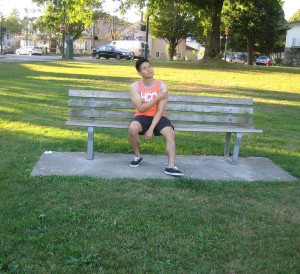A broken arm is when one or more of the bones found in the arm are cracked and common in children and adults. The arm consists of three major bones. The humerus starts at the shoulder up to the elbow which is called the upper arm. At the elbow, the humerus is connected to two bones – radius and ulna. These are found from the elbow to the wrist which forms the forearm.
Causes of a broken arm
Any injury to the arms that results to broken bone can be caused by falls and direct trauma.
A fall that will result into a fracture happens when falling on an outstretched hand. The fracture can occur from the wrist up to the shoulder and depends on the direction of the fall, age of the individual and other factors and stresses placed on the bone.
A direct trauma can be a direct blow from an object such as a bat, vehicular accident and other forces that causes a direct force on any part of the arm.
Symptoms of a broken arm
- There is evident swelling
- Pain that becomes severe when the affected arm is moved
- Deformity of the affected arm
- An open wound maybe caused by a bone that pierces through the skin or there is a cut in the skin during the injury.
- Decreased sensation or there is difficulty in moving the limb which may indicate nerve damage.
Severe symptoms

- There is large amount of swelling or deformity of the affected arm if compared to the opposite arm.
- Diminished functionality of the affected arm and there is pain when it is pressed
- Pain that cannot be relieved by application of ice and pain medications such as acetaminophen.
- There is bone sticking out of the skin along with heavy bleeding from an open wound
- Lack of sensation or movement on the affected arm
- Loss of consciousness
Treatment and home remedies
- Stabilize the affected arm by using a towel as a sling. Place it under the arm and then around the neck. By preventing the arm from moving, place rolled newspaper along the area that is swelling and tape it in place.
- Apply an ice compress on the injured area in order to minimize pain and swelling for 20 to 30 minutes at a time. Place a towel between the ice compress and the skin to prevent it from getting too cold. Avoid placing ice directly to the skin. You can learn more about cold therapy by enrolling in a first aid course.
Preventive measures
- Wear seat belts when riding a vehicle, use wrist guards when skating and skateboarding as well as use appropriate pads when playing contact sports in order to prevent fractures.
- Prevent and treat conditions such as osteoporosis which is a disease that causes loss of bone in older women since it can increase to risk for fractures as they age.
